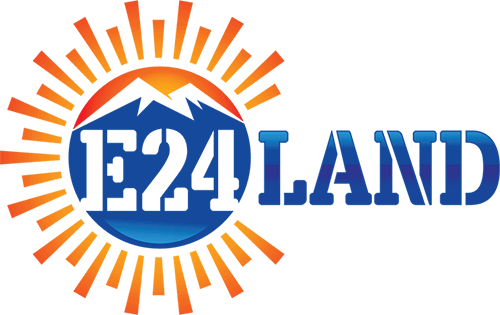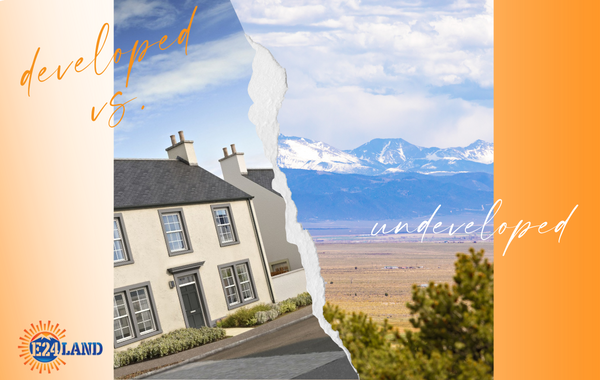What’s the Difference Between Developed and Undeveloped Land?
Developed and undeveloped land, while both worthy investments, there are differences to be noted. Developed land typically refers to improved land with buildings, infrastructure, and other features. Undeveloped land, on the other hand, is land that has yet to get extensively developed. It may be completely undeveloped land or land that’s only partially developed.
The two terms get used in real estate development. When a piece of land is developed, it usually means that roads, water lines, and other infrastructure have been installed and are ready for construction. Undeveloped land may be less expensive, but it has high upfront costs to develop it to the point where it is ready for construction.
There are many factors to consider when deciding whether to buy developed or undeveloped land. One key factor is the purpose for which you want to use the land. For example, developed land may be a better option if you want to build a home or business because it will likely have the necessary infrastructure. On the other hand, if you want to farm or use the land for recreation, undeveloped land may be a better option because it will be cheaper and more suited to your needs.
Another factor to consider is the timeline for development. If you want to develop the land immediately, developed land is likely a better option. But, if you are willing to wait for infrastructure development and other features, undeveloped land may be a better option.
Ultimately, deciding which to buy depends on your needs, preferences, and budget.
Let’s learn more!
What is Developed Land?
Developed land is just that – land prepared for infrastructure or ready to live on. Utilities are ready to connect, and there are power lines for electricity. Knowing if the property has water might be harder to spot, but you can contact the property’s county or city zoning department to learn more.
Developed land needs to have a flat land or the ability to create a flat surface for a foundation. Trees will get removed, and areas will be cleared and cleaned for accessibility. Easy access to the property is essential if you plan on building a business or home. It could be a driveway to the road or a parking lot – there needs to be room and easy access to the location.
What is Undeveloped Land?
As stated above, undeveloped land is a plot of land that lacks utilities, such as plumbing, water, and electricity. Just one look at the property, you may see plenty of trees and bushes, a lack of flat land, and no visible overhead or underground power lines.
Undeveloped land could be a field of pasture or simply a vacant lot. Another example of undeveloped land is a lot formally used for residential or commercial use and is now abandoned, such as a former manufacturing facility or abandoned home. It is expensive to revamp once developed undeveloped land, but it can add serious value to the property and is worth the work.
Pros for Buying Undeveloped Land
- Much more affordable than developed land.
- Less competition when bidding for undeveloped land.
- Pay less in property taxes.
- High return on investment (ROI).
- Many options as to what you can build on it.
Cons of Buying Undeveloped Land
- Loans for undeveloped land often require a higher down payment. At E24 Land, we make this easy, though, with the low down payment, no interest, owner-financed loans!
- There may be zoning restrictions – do thorough research before making the purchase.
- Environmental testing.
- Developing the property can get expensive depending on the use.
While developing raw land has high costs, the pros outweigh the cons. You will make more money back with a higher return on investment and lower purchase price.
What to Look for When Buying Undeveloped Land
Inspecting the land is key when buying undeveloped land. However, more than a drive-by will be needed, and deciding based on location alone could lead to financial risk. Get a real estate expert to help determine if this is viable!
Ask the following:
- What obstacles might you face putting in roads?
- Will establishing utilities, such as natural gas or electricity, be possible?
- Water availability? Will a well on-site or city or county water sources be available?
- Geological features?
- How difficult will it be to build infrastructure? Are there rock formations that require removal or conservation considerations?
- How much money is needed to prepare the land?
Buying Undeveloped Land
So, if you have reached this part of the article and think undeveloped land is suitable for you, keep reading!
Once you know what to do with the property, you can filter your search to narrow your options. Conduct surveys to outline the land and ensure it matches your needs. Is there a road, fence, or river running through the property for sale? During a survey, you will learn if any easements apply. In addition, conduct soil tests and evaluate the land quality – even if you don’t intend to develop any time soon.
Now that you know what you want to buy and run a complete feasibility test on undeveloped land, it’s time to hit the bank. Raw land loans require a higher downpayment, and how you plan to use the land will be considered. The rest of the process is similar to getting traditional mortgage loans. Your best bet is to use our owner-financed loans!
Be sure to evaluate ALL your options. This is a huge investment and requires a lot of time, money, and possible headaches getting it developed. But the work is worth it! Be prepared to expand your comfort zone and consider raw land investments!
If you have any questions about the undeveloped land E24 Land sells, don’t hesitate to contact us at (636) 695-8800. We’re happy to help!
➡️ Don’t forget to join our VIP Program This program keeps you informed on coming soon properties, special discounts, and early access to the new properties before we start advertising to the public!!
➡️Check out all our current inventory!

